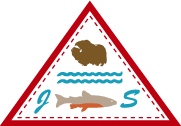
The Inuvialuit Harvest Study (IHS) is a community based monitoring program that collects harvest information from all Inuvialuit harvesters, 16 years and older, who are registered with their local Hunters and Trappers Committee. Participants are asked to identify harvest information, characteristics and location. Surveys are conducted on a monthly basis by trained Community Resource Technicians (CRTs) using an electronic field data collection tool (iPad and associated Inuvialuit designed application).








Inuvialuit Harvest Study data is securely stored on an online data sharing platform, using Arc-GIS software, called the Inuvialuit Settlement Region Platform (ISRP). CRT iPads are linked to the ISRP; therefore, when new harvest information is recorded on the iPad it is immediately viewable on the Inuvialuit Settlement Region Platform. The ISRP facilitates easier data sharing between HTCs, Game Council and the ISR wildlife co-management boards.
We are currently in the second year of the CBMP Inuvialuit Harvest Study (IHS) and saw all six communities participating by the end of 2016. We continue to operate a regionally specific community based monitoring training program for CRTs in the ISR to build capacity for local data collection. The IHS was designed and implemented following multiple community consultations, with accessibility and accountability at the forefront.
Importance
The Inuvialuit Harvest Study (IHS) is important because it collects reliable environmental data and local expert Inuvialuit knowledge that is used to inform and support decisions by resource managers and developers, Inuvialuit organizations and wildlife co-management boards.
Moreover, the Inuvialuit Harvest Study supports the following overall principles of the Inuvialuit Final Agreement (IFA):
To preserve Inuvialuit cultural identity and values within a changing northern society;
The IHS collects local environmental knowledge and traditional harvesting pattern data in order to protect, preserve and enhance Inuvialuit harvest culture in a changing society.
To enable Inuvialuit to be equal and meaningful participants in the northern and national economy and society; and,
The data and knowledge collected through the IHS are direct results of community participation and local Community Resource technicians (CRTs). Therefore, all Inuvialuit harvesters have the opportunity to contribute their experiences and knowledge to the larger project of Inuvialuit data collection.
To protect and preserve the Arctic wildlife, environment and biological productivity.1
The IHS is an Inuvialuit designed, driven and implemented data collection project focused on improving resource management decision-making by including local and traditional knowledge. The data collected is used to continue to protect and preserve Arctic and Inuvialuit priorities.
Data Access
All harvest information and data is confidential. It is only shared with vested Inuvialuit partners with all names and exact harvest locations remaining confidential. Only those who contribute to the ISRP, such as HTCs and CRTs, have the required access login and password.
Data access is restricted because the central purpose of this study is to provide the required data to appropriately inform Inuvialuit policies and decisions.
Benefits
Benefits to the ISR, Communities & Inuvialuit Partners
Communities are equipped with the information, tools and training to carry out community based monitoring
Local perspectives and traditional knowledge are included in an understanding of local environmental and wildlife trends and changes over time
Complete and inclusive information for decision making at the local, regional and national level
A networked and integrated approach to community based monitoring eliminates duplication of monitoring projects and efforts
Increased opportunity for communities to provide recommendations for research needs in the ISR
Local research needs and priorities can be incorporated into monitoring efforts
Benefits to the Government, Researchers, Industry and other Stakeholders
Central location for all CBM data that can be accessed by all six ISR communities as well as regional decision makers.
Trained community monitors and liaisons are a resource to stakeholders conducting monitoring work in the ISR
Local participation in region-wide monitoring efforts provide data and information to national and Arctic-wide monitoring networks
Facilitates improved integration of information in decision making at the local, regional and national level
Increased access to local priorities, traditional knowledge and community perspectives facilitates accountable, informed and effective decision making
